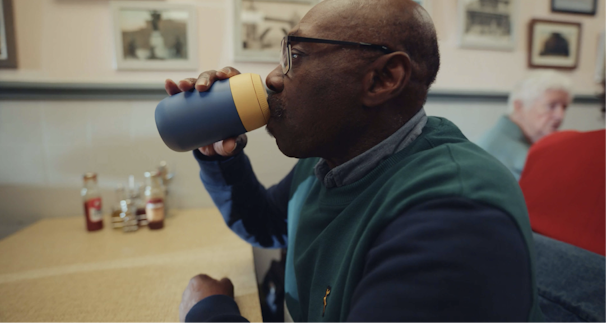Consumption must fall: how marketers are getting ahead in sustainability and design
Unsustainable lifestyles driven by excessive consumer culture have wrought havoc on the planet. In the aftermath of Cop26, the design industry says it needs help from marketers to change the status quo.

Chilly’s latest campaign aims to make reusable products mainstream
Smart designers have all the tools they need to create sustainable products and services, but can they rely on marketers to make them mainstream? Leaders and thinkers from the design world weigh in.
Driving down consumption
Marketers are recognizing that current levels of consumption are unsustainable. Purpose Disruptors research found that ads add an extra 28% to each Brit’s annual carbon footprint – and this number doesn't account for the impact of the products sold.
Minnie Moll, chief executive of the Design Council, says we can’t design our way out of trouble. We need to sell fewer products, each with longer life cycles that can be extended with repairs.
“Driving down consumption is a fundamental part of sustainable design, and that will be a tough pill to swallow for some.” She says arketers will be vital in making consumers’ habit of buying less, and buying more sustainably, cool.
“One of the things agencies do extremely well is customer insight, and if they know that people both want and need to make more informed choices, they can use their creativity to enable that.”
Creating new value systems
Moll says that better decision making comes from increasing awareness of product supply chains; connecting consumers to the materials, processes, and labor that goes into making their items, so they can better understand the value and impact of what they buy.
“We now need to make the buyer part of the supply chain, so not only are they aware of where their product has come from and who made it, but what happens at the end of its lifecycle and whether they mend it, replace it or return it.”
Joe Macleod is the founder of AndEnd, an agency dedicated to what he calls “consumer offboarding.” He says that the issue with today’s consumer culture is an obsession with accumulation and a lack of awareness around what to do with products we are finished with.
“Agencies are very good at the consumer onboarding process, and there’s a lot of work that goes into selling something and making something useful to consumers, but that we abandon at the end. It’s hard to truly have an attachment to something that will end up in a landfill or in the ocean.”
Therefore Macleod says agencies ought to build how consumers can dispose of a product they are no longer using into the customer journey, whether that’s by returning it to the brand for a voucher, like with Patagonia clothing, or by creating services that will correctly dispose of the item for you.
Reduce, re-use, recycle
Brands such as Lego, Ikea, and Patagonia are investing in the circular economy – a mode of production and consumption that prioritizes reusing, repairing, refurbishing and recycling existing materials and products for as long as possible.
However, reusable-focused brands including Chilly’s have spoken out against the lack of awareness being raised about reusing and recycling on a larger scale – the topic was neglected entirely in the UK government’s most recent sustainability strategy.
Chilly’s director of creative and marketing Phil Jacobson agrees that making sustainable lifestyles aspirational is the key to making it part of mainstream culture. He says: “We believe that beautifully designed reusable products are part of the solution to the waste problem. A meaningful brand narrative has the power to instigate change.”
Therefore the question remains as to how marketers can help center these messages on behalf of designers.
Centering sustainability
Alicia Storie is an eco-conscious interior designer, and she feels that marketing agencies could do more to prioritize working with designers and clients that put sustainability at the heart of what they do.
“As designers we need to be really careful about how we communicate our work to people, to keep us approachable and for consumers to understand what we do,” she says.
“We are learning new ways to make our practices sustainable all the time, but we need help communicating that information to the public so that they see the value in sustainability and its design.”
Storie says marketers can always choose which clients they work with and they “could do more to platform the work of smaller sustainable brands and businesses,” in place of working with larger, high-carbon clients.
Moll feels that tighter regulation is now required to ensure the right market conditions for both designers and marketers to get sustainable products past stakeholders and into mainstream culture.
“It has to come from the top down,” she says. “The grassroots movement is incredible and making their demands heard, but businesses need a framework from which to operate and that must be guided by government regulation and legislation.”
Designers have all the tools they need to create sustainable products, however they need the right conditions from both legislation and marketers to get those products into the hands of consumers – and keep them there.

